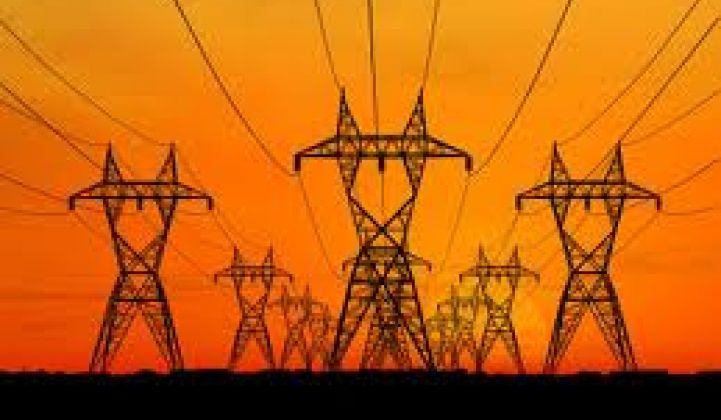California is in the midst of developing its substantial renewable resources, but to keep costs low it is important to balance in-state generation with imports from other high-quality resource areas across the West.
Several independently developed transmission projects propose to connect these high-quality resources directly to California through high voltage direct current (HVDC) lines. As California moves beyond its 33 percent Renewable Portfolio Standard goal [?--Ed.] and strives for deeper reductions in harmful emissions, having the option to import renewable energy becomes even more important.
If utilities or generators want to take advantage of this option when these projects come to fruition, we need a more open transmission planning process. If these lines are developed, utilities can then pay for the right to move energy along the new HVDC lines. The result is clean power, delivered at a price well below what many utilities might have to pay if there are no out of state options available.
Despite their potential benefits, the current process used by the California Independent System Operator (CAISO) prevents interstate HVDC projects from competing on a level playing field with other energy options available to California. Ideally, an HVDC project capable of delivering a certain amount of energy to a certain spot in California would be considered in the same manner as, for instance, a new in-state solar project. Instead, the CAISO relies on the output of a complicated spreadsheet model developed by the California Public Utilities Commission (CPUC) to tell it where energy projects will most likely be located and how much the power will cost.
The CAISO then creates a transmission plan that includes new lines built to those areas that score best in this “RPS Calculator.” Wind and solar resources served by new HVDC lines are at a disadvantage in this process: the Calculator does not accurately reflect the quality of out-of-state resource areas, or the efficiency of HVDC transmission lines. While the CAISO does allow projects outside of those identified through the RPS Calculator Process to be considered in its annual transmission plan, the types of projects eligible for consideration do not provide a means to study an HVDC transmission line to deliver stranded renewable resources other than resources identified, once again, through the RPS Calculator Process.
When the CAISO released its 2011-2012 annual transmission plan, interstate HVDC projects were not included.
To connect with the existing electricity grid, generation projects must file a request with the CAISO and then be studied to determine if their proposed amount of injected energy can be supported by the current infrastructure. Sometimes, these studies identify upgrades that need to be made to the existing transmission system before a new generation project can safely interconnect. If a generation project applies for interconnection from an area that scores high on the RPS Calculator, any necessary upgrades are likely to be included in the CAISO annual plan and funded, at least partially, by ratepayers.
A generation project that plans to use a new HVDC line to interconnect to California, but finds that the HVDC line is not included in the CAISO plan, is suddenly left in no-man’s land despite the fact that the cost of its delivered energy may be less expensive inclusive of the cost of the HVDC transmission delivery service to move the energy into California. As an awkward work-around, HVDC projects have attempted to file for interconnection to the CAISO as generators. Predictably, this leads to more delays and confusion as the CAISO process imposes generation-specific requirements, like site exclusivity covering half a project’s footprint, that are unattainable for lengthy HVDC projects within the necessary timeframe.
At a minimum, assumptions in the RPS Calculator should be updated to reflect current resource profiles and project costs.
The CAISO should seriously consider whether a top-down, hyper-complex model is the best way to plan transmission for the state’s renewable energy build-out. As pointed out in this article, there is a cost associated with ever more confusing and inconsistent policies. In the case of interstate HVDC projects, ratepayers run the risk of missing out on lower-cost energy options.
One possible solution would be to create a separate interconnection process for interstate HVDC transmission lines. Modeled on the current Generation Interconnection and Deliverability Allocation Procedures (GIDAP), this process would lead to a Large Facility Interconnection Agreement (LFIA) as opposed to a Large Generator Interconnection Agreement (LGIA). There’s a precedent for this: In 2011, FERC approved a modified LGIA between the New York Independent System Operator, Consolidated Edison, and Hudson Transmission Partners for an HVDC facility.
By creating a separate, transparent process, the CAISO would be able to assess the potential benefits of HVDC facilities without relying on the assumptions of the RPS calculator, or worse, on an HVDC project’s ability to navigate an interconnection process designed for generators. The result would be a more complete set of renewable, low-cost energy options for people and businesses in California.
***
Daniel Hodges-Copple serves as a development analyst on the Centennial West Clean Line project, a 3,500-megawatt high voltage direct current transmission line aiming to deliver renewable power from northeastern New Mexico to communities in California.



